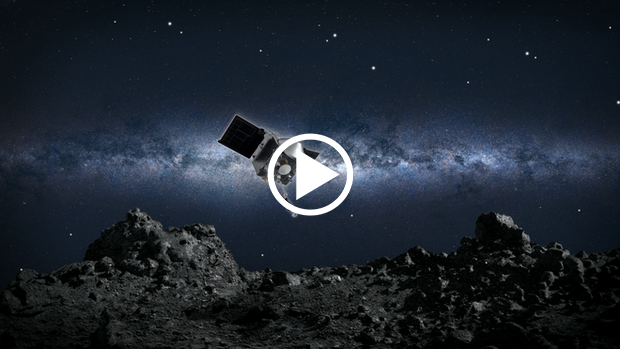Scientists hope this mission will help shed light on the formation of planets in our solar system and understand the possible effects of asteroids on Earth.
After a 4-year journey, the Osiris-Rex probe of the American National Aeronautics and Space Administration (NASA) will officially touch the surface of the asteroid Bennu to collect samples to bring back to Earth on 10/20 (i.e. October 21 to l Vietnam time).
It is known that astronomy enthusiasts in Vietnam can start watching this special event at 4:00 a.m. on October 21, 2020 on the official NASA website or on the Youtube channel.
Bennu is a carbonaceous asteroid likely to collide with Earth, discovered on September 11, 1999 by the Lincoln Near-Earth Asteroid Research Agency (LINEAR). This asteroid has an almost spherical shape with an average diameter of about 492 m. Bennu’s surface is mostly made up of rock plateaus, craters, ridges, and quartzite.
According to NASA, the Osiris-Rex is expected to land in an area called Nightingale on the surface of Bennu. It is an area with many rocks on the surface, about 16 m wide. The size of a truck, this is a very difficult and risky task for the Osiris-Rex, as the ship must avoid the surrounding rocks. As a result, the ship’s robotic arm will only touch Bennu’s surface for 5-10 seconds to collect rock and dust samples.
As planned, Osiris-Rex will collect at least 57 grams of samples on Bennu, before returning to Earth on September 24, 2023. This is the largest volume of samples brought from space to Earth since the Apollo program . Scientists hope this mission will help shed light on the formation of planets in our solar system and understand the possible effects of asteroids on Earth.
It is known that the work of collecting samples from the surface of the planet Bennu was initially difficult because NASA could not find a surface large enough and relatively flat for the Osiris-Rex to land. The spacecraft itself is designed to land on a flat surface with a radius of 25m, but images returned to Earth in December 2018 show that the surface of this 490m in diameter asteroid is heavily covered with special rocks. Therefore, the research team must consider another alternative.
Additionally, since asteroid Bennu is located approximately 207 million miles (334 million km) from Earth, the transmission time will take up to 18.5 minutes. This makes direct control of the Osiris-Rex ship difficult. Therefore, the Osiris-Rex will have to perform the meteor collection process automatically.


